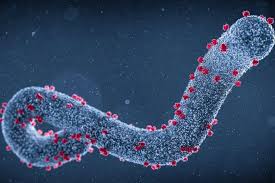A deadly cholera outbreak has swept through Niger State, killing 13 people and hospitalising over 250 others across six Local Government Areas (LGAs).
The first cases were reported on Sunday in Shiroro, but by midweek, the infection had spread to Minna, Bosso, Magama, Bida, and Munya.
Health officials confirmed 253 cases so far. The worst-hit areas are Chanchaga and Bosso, with 67 and 68 cases respectively. Shiroro follows with 58, while Bida, Magama, and Munya each recorded 20 cases.
The outbreak has been linked to contaminated rainwater consumed by residents without access to clean drinking water.
Officials are advising people to boil or treat water before drinking and to avoid unwashed fruits or improperly cooked food.
Isolation Centres and Emergency Response
To contain the spread, the state government opened an isolation centre at the old wing of the Late Sen. Idris Kuta Primary Healthcare Centre in Minna. Similar centres have been activated in other affected LGAs.
“We have established treatment and isolation centres in the affected LGAs to contain the outbreak,” said Commissioner for Primary Healthcare, Dr. Ibrahim Dangana.

He added that a multi-sectoral response team has been deployed, including support from the World Health Organisation (WHO), Niger State Emergency Management Agency (NSEMA), and the State Water Board.
“Aggressive sensitisation campaigns are ongoing, targeting religious organisations like CAN and Islamic groups, as well as the eight emirates in the state,” Dangana said.
The state has also procured large quantities of antibiotics and other drugs. All patients are receiving treatment free of charge.
Surveillance and Community Engagement
Director of Public Health, Dr. Ibrahim Idris, confirmed that surveillance teams have been stationed in all affected areas. “The graph of the outbreak has been on a downward trend,” he said.
UNICEF has joined the response, helping to upgrade isolation centres and support house-to-house sensitisation, especially in schools.
Officials say most of the fatalities are children. “As of today, most of those who have died are children, and they are also more represented in the 297 suspected cases,” said UNICEF’s Dr. Gerida Birukila.
Rate, Like 👍, Comment💬, share this article, Follow us on our social media handles, and Submit your own story to get featured and earn rewards!







